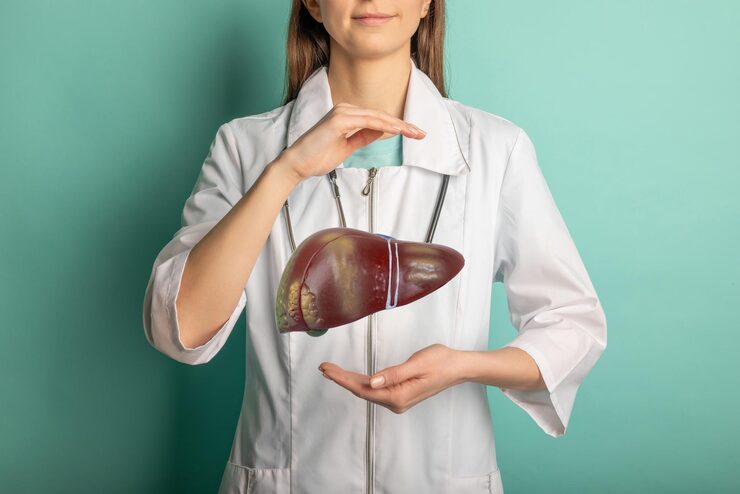The liver plays a critical role in detoxification, metabolism, and maintaining overall health. Supporting this vital organ through proper care is essential, and one of the most effective ways to do so is through regular physical activity. Exercises for liver health not only improve blood circulation but also aid in reducing fat accumulation in the liver, thereby preventing conditions like fatty liver disease.
Engaging in the right exercises can stimulate liver function by boosting metabolism and enhancing the body’s ability to flush out toxins. Aerobic activities, strength training, and flexibility workouts all contribute uniquely to liver health. For example, moderate cardio helps reduce liver fat, while strength exercises improve muscle mass, supporting metabolic processes linked to liver function.
Adding exercises for liver health into your daily routine doesn’t have to be complicated. Start with simple activities like brisk walking or cycling, gradually increasing intensity. Consistency is key—regular exercise combined with a balanced diet can significantly improve liver function and overall well-being.

Why Is Liver Health Important?
Liver health is crucial because the liver performs many essential functions, including detoxifying harmful substances, producing vital proteins, and regulating metabolism. When the liver is compromised, it can lead to serious health issues like fatty liver disease, cirrhosis, and even liver failure. Maintaining a healthy liver ensures the body can effectively process nutrients and eliminate toxins, which supports overall well-being.
One of the best ways to support liver health is through exercises for liver health. Physical activity helps reduce liver fat, improves insulin sensitivity, and enhances blood flow, all of which contribute to better liver function. Regular exercise also helps maintain a healthy weight, reducing the risk of liver-related diseases that often result from obesity and sedentary lifestyles.
Prioritizing liver health by incorporating exercises for liver health into your routine can have lasting benefits. Combined with a balanced diet and lifestyle, these exercises help keep the liver functioning optimally, protecting your body from illness and promoting long-term health.
The liver performs over 500 critical functions, including:
Filtering toxins from the blood
Producing bile for digestion
Metabolizing fats, proteins, and carbohydrates
Regulating blood sugar levels
Storing vitamins and minerals
Poor liver health can lead to conditions such as fatty liver disease, hepatitis, cirrhosis, and even liver cancer. Modern lifestyles, including poor diet, excessive alcohol consumption, and sedentary behavior, contribute to liver problems. Thankfully, regular exercise can reverse or prevent many of these issues by improving liver function and promoting detoxification.
How Does Exercise Help Liver Health?

Exercise plays a vital role in supporting liver health by improving the body’s metabolism and reducing fat buildup in the liver. When you engage in exercises for liver health, your body burns excess fat, which helps prevent and reduce fatty liver disease—a common condition that impairs liver function. Regular physical activity also enhances insulin sensitivity, which is essential for maintaining stable blood sugar levels and preventing liver damage.
In addition to fat reduction, exercises for liver health improve circulation and oxygen delivery to the liver, promoting detoxification and cellular repair. Increased blood flow helps the liver efficiently process toxins and waste products, supporting its vital functions. Exercise also reduces inflammation, which is often linked to liver diseases, helping to protect liver cells from damage.
Overall, exercises for liver health in your lifestyle strengthen liver function and support overall wellness. Regular movement combined with healthy habits can prevent liver-related diseases and improve your body’s natural ability to heal and regenerate.
Exercise offers several benefits to the liver:
Reduces Liver Fat: Physical activity decreases fat accumulation in liver cells, preventing or reversing fatty liver disease.
Improves Insulin Sensitivity: Exercise regulates blood sugar and insulin, reducing liver inflammation caused by insulin resistance.
Enhances Blood Circulation: Better blood flow helps transport nutrients and remove toxins efficiently.
Boosts Immune Function: Regular activity strengthens the immune system, helping fight liver infections.
Reduces Oxidative Stress: Exercise promotes antioxidant production, protecting liver cells from damage.
Top Exercises For Liver Health
Brisk Walking

Brisk walking is one of the simplest yet most effective exercises for liver health. This low-impact aerobic activity helps improve blood circulation and boosts metabolism, which supports the liver’s ability to process fats and toxins efficiently. By walking at a steady, quick pace, you encourage your body to burn calories and reduce fat accumulation in the liver, lowering the risk of fatty liver disease.
Adding brisk walking to your daily routine can enhance insulin sensitivity and reduce inflammation, both of which are crucial for maintaining a healthy liver. Unlike intense workouts, brisk walking is accessible to most people, making it a sustainable option for long-term liver health. Consistency in this exercise helps the liver perform its detoxifying functions more effectively, promoting overall well-being.
As part of exercises for liver health, brisk walking requires no special equipment and can be done almost anywhere. Aim for at least 30 minutes a day to experience its full benefits, and pair it with a balanced diet for optimal liver support.
Why it’s beneficial:
Brisk walking is a low-impact, accessible exercise that improves cardiovascular health and promotes fat burning. Studies have shown that moderate aerobic exercise like walking can significantly reduce liver fat and improve liver enzymes.
How to do it:
Walk at a pace where talking is slightly challenging but not impossible.
Aim for 30-60 minutes, 5 days a week.
Incorporate inclines or hills for added intensity.
Jogging or Running
Jogging or running are powerful exercises for liver health that help improve cardiovascular fitness while supporting liver function. These high-intensity activities increase your heart rate and boost metabolism, which aids in burning excess fat stored in the liver. Reducing liver fat is essential to preventing conditions like non-alcoholic fatty liver disease, making jogging or running excellent choices for liver care.
Regular jogging or running also improves insulin sensitivity and helps regulate blood sugar levels, both important factors for maintaining a healthy liver. Additionally, these exercises stimulate blood flow to the liver, enhancing its ability to detoxify the body and repair damaged cells. The increased circulation also supports overall liver function and reduces inflammation, which can contribute to liver damage.
Including jogging or running as part of your exercises for liver health routine can yield significant benefits. Start slowly if you’re new to these activities and gradually increase duration and intensity to protect your joints and maximize liver support over time.
Why it’s beneficial:
Jogging and running increase heart rate and metabolism, burning calories more efficiently. This helps reduce fat storage in the liver and improves insulin sensitivity.
How to do it:
Start with a 5-minute warm-up walk.
Gradually increase to jogging or running for 20-40 minutes.
Include interval training (alternate fast and slow pace) for extra benefits.
Cycling

Cycling is an excellent choice among exercises for liver health, offering a low-impact way to boost cardiovascular fitness and support liver function. Regular cycling helps increase metabolism and burn excess fat, which is crucial for preventing fat buildup in the liver. This reduction in liver fat lowers the risk of developing liver-related conditions such as fatty liver disease.
In addition to fat loss, cycling improves insulin sensitivity and promotes better blood circulation, which helps the liver efficiently remove toxins from the body. The steady, rhythmic motion of cycling also reduces inflammation and supports liver cell regeneration, both vital for maintaining a healthy liver. Because cycling is gentle on the joints, it’s accessible for people of all fitness levels.
Including cycling in your routine as part of exercises for liver health is a sustainable and enjoyable way to protect your liver. Aim for consistent sessions, whether outdoors or on a stationary bike, to enhance liver function and overall well-being.
Why it’s beneficial:
Cycling is an excellent aerobic exercise that strengthens the legs and cardiovascular system while promoting liver fat reduction. It’s easy on the joints and can be done indoors or outdoors.
How to do it:
Use a stationary bike or cycle outdoors.
Maintain a steady pace for 30-60 minutes.
Include intervals of higher intensity cycling.
Swimming
Swimming is an excellent full-body workout and one of the best exercises for liver health. It combines cardiovascular exercise with muscle strengthening, helping to boost metabolism and reduce fat accumulation in the liver. By engaging multiple muscle groups, swimming increases calorie burn, which supports liver function and helps prevent fatty liver disease.
Besides fat reduction, swimming improves blood circulation and oxygen delivery to the liver, enhancing its ability to detoxify the body. The low-impact nature of swimming makes it suitable for people of all ages and fitness levels, allowing consistent exercise without putting stress on the joints. Regular swimming sessions also help reduce inflammation, which is important for protecting liver cells from damage.
Including swimming in your exercises for liver health routine can promote overall wellness and improve liver function over time. Aim for at least 30 minutes of swimming several times a week, combined with a healthy diet, to maximize the benefits for your liver and general health.
Why it’s beneficial:
Swimming provides a full-body workout with minimal joint impact. The continuous motion improves circulation, reduces liver fat, and enhances overall metabolism.
How to do it:
Swim laps for 30 minutes, mixing different strokes.
Try water aerobics or swimming classes for variety.
Aim for 3-4 sessions per week.
Yoga

Yoga is a gentle yet effective form of exercises for liver health that promotes both physical and mental well-being. Through a combination of stretching, breathing, and meditation, yoga helps improve blood circulation and stimulates the liver’s detoxification processes. Certain yoga poses specifically target the abdominal area, massaging the liver and encouraging better function.
In addition to physical benefits, yoga reduces stress and inflammation, which are common contributors to liver problems. Lowering stress hormones supports liver health by preventing damage caused by chronic inflammation. Regular practice of yoga enhances digestion and metabolism, aiding the liver in processing nutrients and eliminating toxins more efficiently.
Including yoga in your exercises for liver health routine offers a holistic approach to maintaining liver function. It’s accessible for all fitness levels and can be easily incorporated into daily life. Practicing yoga regularly, combined with a balanced diet, can significantly improve liver health and overall wellness.
Why it’s beneficial:
Yoga combines physical movement with breathing and mindfulness, reducing stress and inflammation. Certain poses stimulate liver function by improving blood flow and aiding digestion.
Effective poses for liver health:
Twists (e.g., Ardha Matsyendrasana) to massage internal organs
Forward bends to stimulate liver and gallbladder
Pranayama (breathing exercises) to increase oxygenation
How to do it:
Practice yoga 3-5 times weekly.
Include liver-specific poses and breathing techniques.
Use online videos or attend classes.
Strength Training
Strength training is a powerful addition to exercises for liver health, helping to build muscle mass and improve overall metabolism. Increased muscle mass boosts the body’s ability to burn fat, including harmful fat stored in the liver, which helps prevent conditions like fatty liver disease. Regular strength training supports a healthy weight, reducing the strain on the liver and promoting better liver function.
Besides fat reduction, strength training improves insulin sensitivity, which is crucial for maintaining stable blood sugar levels and protecting the liver from damage. It also enhances blood flow and promotes the repair of liver cells, supporting detoxification processes. These benefits make strength training a vital part of a well-rounded routine for liver health.
Adding strength training to your exercises for liver health routine doesn’t require heavy weights or complex equipment. Bodyweight exercises, resistance bands, or light weights performed consistently can provide significant liver benefits, contributing to improved overall health and wellness.
Why it’s beneficial:
Building muscle mass through resistance exercises improves insulin sensitivity and metabolic rate, aiding liver function and fat metabolism.
How to do it:
Use free weights, resistance bands, or bodyweight exercises.
Focus on major muscle groups: legs, back, chest, and arms.
Perform 2-3 sessions per week with 8-12 repetitions per exercise.
High-Intensity Interval Training (HIIT)
High-Intensity Interval Training (HIIT) is an effective and time-efficient form of exercises for liver health. HIIT involves short bursts of intense exercise followed by brief recovery periods, which boosts metabolism and increases calorie burn. This intense activity helps reduce fat stored in the liver, lowering the risk of fatty liver disease and improving overall liver function.
In addition to fat reduction, HIIT enhances insulin sensitivity, which is essential for maintaining healthy blood sugar levels and protecting the liver from damage. The increased blood flow during HIIT sessions also promotes better oxygen delivery to the liver, supporting its detoxification and regenerative processes. HIIT’s ability to reduce inflammation further benefits liver health by protecting liver cells from harm.
Including HIIT in your exercises for liver health routine can lead to rapid improvements in liver function and overall fitness. Even short, regular HIIT workouts can provide significant benefits, making it a practical choice for those seeking an efficient way to support their liver and general well-being.
Why it’s beneficial:
HIIT alternates short bursts of intense activity with rest, boosting metabolism and fat burning. It’s been shown to decrease liver fat more effectively than moderate exercise alone.
How to do it:
Warm-up for 5 minutes.
Alternate 30 seconds of sprinting, jumping, or cycling at maximum effort with 1-2 minutes of rest.
Repeat for 15-20 minutes.
Tai Chi

Tai Chi is a gentle, low-impact form of exercises for liver health that combines slow, flowing movements with deep breathing and meditation. This ancient practice helps improve blood circulation and stimulates the body’s natural detoxification processes, supporting liver function. Tai Chi’s focus on balance and relaxation also reduces stress, which is important for protecting the liver from inflammation and damage.
Beyond physical benefits, Tai Chi promotes mental calmness and reduces cortisol levels, the stress hormone that can negatively impact liver health. Its slow, controlled movements enhance oxygen flow throughout the body, helping the liver efficiently process toxins and regenerate healthy cells. This holistic approach makes Tai Chi an excellent option for those seeking a gentle yet effective way to support their liver.
Including Tai Chi in your exercises for liver health routine offers a sustainable and mindful way to maintain liver function. Practicing regularly, even for short sessions, can improve liver health and contribute to overall physical and mental well-being.
Why it’s beneficial:
Tai Chi is a gentle martial art focusing on slow, deliberate movements. It reduces stress, improves circulation, and promotes detoxification, supporting liver health.
How to do it:
Practice 20-40 minutes daily or several times a week.
Follow guided Tai Chi videos or join a local class.
Focus on breathing and fluidity of movements.
Additional Tips for Exercising for Liver Health
To maximize the benefits of exercises for liver health, it’s important to stay consistent and choose activities you enjoy. Regular exercise helps reduce liver fat, improve metabolism, and support detoxification. Aim for at least 30 minutes of moderate exercise most days of the week, combining aerobic activities with strength training to target liver health from multiple angles.
Hydration plays a crucial role when practicing exercises for liver health. Drinking plenty of water before, during, and after workouts helps the liver flush out toxins more effectively. Additionally, pairing exercise with a balanced diet rich in fruits, vegetables, and lean proteins can further enhance liver function and overall well-being.
Lastly, listen to your body and avoid overexertion, especially if you’re new to physical activity. Gradually increasing the intensity of exercises for liver health allows your liver and body to adapt safely. Consulting a healthcare professional before starting a new exercise routine is also recommended, particularly if you have existing liver conditions.
Stay Hydrated
Proper hydration supports liver detoxification. Drink plenty of water before, during, and after exercise.
Combine Exercise with a Liver-Friendly Diet
Exercise works best when paired with a diet rich in antioxidants, fiber, and healthy fats. Avoid excessive alcohol, processed foods, and sugars.
Avoid Overtraining
While exercise is beneficial, too much intense activity can increase oxidative stress. Balance high-intensity workouts with rest and lighter exercises.
Consult Your Doctor
If you have existing liver conditions, talk to your healthcare provider before starting a new exercise regimen.
Daily Exercises Routine for Liver Health
| Day | Exercise Type | Duration | Description |
|---|---|---|---|
| Monday | Brisk Walking | 30 minutes | Moderate pace walk to boost metabolism and circulation. |
| Tuesday | Strength Training | 20-30 minutes | Bodyweight or light weights to build muscle and burn fat. |
| Wednesday | Yoga | 30 minutes | Stretching and breathing exercises to reduce stress and improve detoxification. |
| Thursday | Jogging or Running | 20-30 minutes | Cardiovascular exercise to reduce liver fat and improve insulin sensitivity. |
| Friday | Cycling | 30 minutes | Low-impact cardio to enhance blood flow and liver function. |
| Saturday | Swimming | 30 minutes | Full-body workout that boosts metabolism and reduces inflammation. |
| Sunday | Tai Chi | 20-30 minutes | Gentle movements and meditation to promote relaxation and liver health. |
Conclusion

Maintaining liver health is essential for overall well-being, and exercises for liver health play a vital role in supporting this important organ. Regular physical activity helps reduce liver fat, improves metabolism, and enhances the liver’s ability to detoxify the body. By incorporating a variety of exercises, from aerobic workouts to strength training and gentle practices like yoga and Tai Chi, you can promote optimal liver function and prevent liver-related diseases.
Exercises for liver health not only improve physical fitness but also reduce inflammation and boost insulin sensitivity, which are crucial for protecting the liver from damage. Consistent exercise combined with a balanced diet and healthy lifestyle choices creates a strong foundation for long-term liver wellness.
Ultimately, making exercises for liver health a regular part of your routine can lead to improved energy, better digestion, and enhanced overall health. Prioritize movement every day to keep your liver functioning at its best and support your body’s natural healing processes.
FAQs
Q1. Why are exercises for liver health important?
Exercises for liver health help reduce fat buildup in the liver, improve metabolism, and enhance detoxification. Regular physical activity lowers the risk of liver diseases like fatty liver and supports overall liver function.
Q2. What types of exercises are best for liver health?
A combination of aerobic exercises (like walking, jogging, and cycling), strength training, and gentle activities such as yoga and Tai Chi are ideal. These exercises improve circulation, reduce inflammation, and promote liver detoxification.
Q3. How often should I exercise for liver health?
Aim for at least 30 minutes of moderate exercise most days of the week. Consistency is key to achieving lasting benefits for liver function and overall wellness.
Q4. Can exercise reverse fatty liver disease?
While exercise can significantly reduce liver fat and improve liver health, it works best alongside a healthy diet and lifestyle. In many cases, regular exercise helps reverse early stages of fatty liver disease.
Q5. Is it safe to start exercising if I have liver problems?
It’s important to consult your healthcare provider before starting any exercise routine if you have liver conditions. A tailored plan can ensure you exercise safely while benefiting your liver health.
